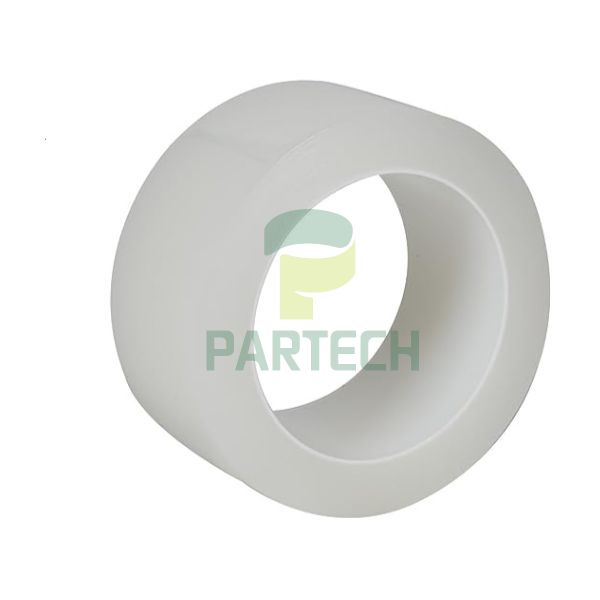Unwrapping the Environmental Impacts of Clear PVC Easy Tear Tape
2024-05-17
Clear PVC Easy Tear Tape is widely praised for its convenience and versatility, but as with many synthetic products, its environmental footprint is a growing concern. From manufacturing to disposal, the lifecycle of Clear PVC Easy Tear Tape involves several stages that can impact the environment. In this blog, we’ll explore these impacts and consider potential ways to mitigate them.
The Manufacturing Process
Resource Extraction
The production of Clear PVC Easy Tear Tape begins with the extraction of raw materials. PVC, or polyvinyl chloride, is derived from petroleum, a non-renewable resource. The extraction and processing of petroleum contribute significantly to environmental issues, including habitat destruction, oil spills, and greenhouse gas emissions.
Chemical Processing
The transformation of petroleum into PVC involves complex chemical processes, often requiring chlorine, which is obtained through electrolysis of saltwater. This process consumes a large amount of electricity, typically sourced from fossil fuels, further contributing to carbon emissions. Additionally, the production of PVC releases harmful byproducts such as dioxins, which are persistent environmental pollutants.
Manufacturing Adhesives
The adhesive used in Clear PVC Easy Tear Tape is another environmental concern. Many adhesives contain solvents and volatile organic compounds (VOCs) that can contribute to air pollution and have adverse health effects. Manufacturing these adhesives often involves additional chemical processing, which adds to the overall environmental footprint.
Environmental Impact of Usage
While in use, Clear PVC Easy Tear Tape does not pose significant direct environmental hazards. However, the widespread usage of this tape across various industries leads to substantial cumulative impacts. Large-scale usage means more frequent production cycles, thus perpetuating the environmental effects associated with manufacturing.
Disposal and Post-Consumer Impact
Non-Biodegradability
One of the most significant environmental issues with Clear PVC Easy Tear Tape is its non-biodegradable nature. PVC can persist in the environment for hundreds of years, contributing to long-term pollution. When disposed of in landfills, it occupies valuable space and can leach harmful chemicals into the soil and groundwater.
Recycling Challenges
Recycling PVC is technically possible but economically challenging. PVC recycling requires specialized facilities and processes, which are not widely available. Contamination with other materials further complicates recycling efforts, often rendering the tape unsuitable for recycling and leading it to be incinerated or landfilled instead.
Incineration
When incinerated, PVC releases harmful chemicals, including dioxins and hydrochloric acid. These substances can contribute to air pollution and pose serious health risks to humans and wildlife. Incineration facilities must have advanced filtration systems to capture these emissions, but such facilities are not universally available, especially in developing regions.
Mitigation Strategies
Sustainable Alternatives
One of the most effective ways to mitigate the environmental impact of Clear PVC Easy Tear Tape is to explore and adopt sustainable alternatives. Biodegradable tapes made from materials like cellulose or plant-based polymers are gaining popularity. These alternatives can significantly reduce the environmental footprint associated with both production and disposal.
Improved Recycling Programs
Enhancing recycling programs and facilities specifically for PVC can help mitigate some of the disposal issues. Investing in advanced recycling technologies and infrastructure can make PVC recycling more economically viable and environmentally friendly.
Reducing Usage
Minimizing the use of Clear PVC Easy Tear Tape where possible can also help reduce its environmental impact. Encouraging practices such as reusing packaging materials and using alternative sealing methods can decrease demand and production.
Consumer Awareness
Educating consumers about the environmental impacts of Clear PVC Easy Tear Tape and promoting responsible disposal practices can also make a difference. Clear labeling and instructions on how to dispose of the tape properly can help reduce environmental harm.
Conclusion
The environmental impacts of Clear PVC Easy Tear Tape are significant, stemming from resource extraction, manufacturing processes, and disposal challenges. While its convenience and versatility are undeniable, it is crucial to balance these benefits with a consideration of its environmental footprint. By exploring sustainable alternatives, improving recycling efforts, reducing usage, and raising consumer awareness, we can mitigate some of the adverse effects and move towards a more sustainable future. The choice is clear: our actions today will determine the health of our planet tomorrow.



